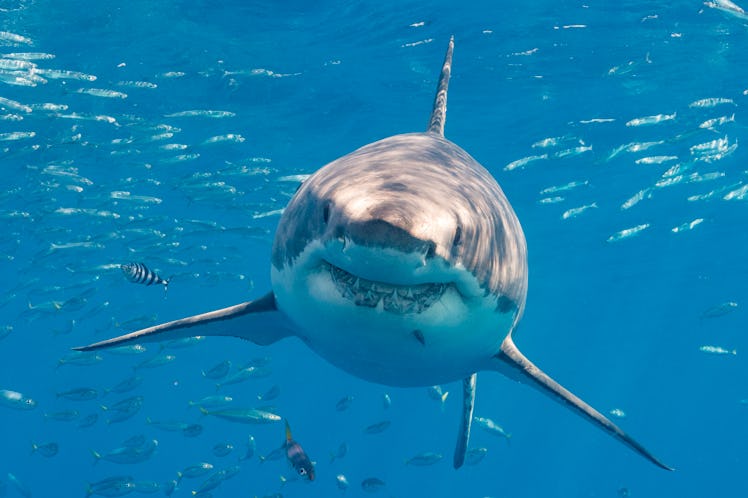This Live Map Shows Exactly Where Sharks Are Roaming In The Ocean
Sharks aren’t actually very dangerous to humans, but they are everywhere.

In general, people have a lot of misunderstandings about sharks, and it makes sense. Most of us only see sharks on TV or in movies, and they’re often the villain of the story — a creature with sinister intentions stalking people and hungry for blood. However, the reality is very different, sharks are not very dangerous to humans, but they are everywhere — and there’s a map that tracks where Sharks are roaming in the ocean.
OCEARCH is a non-profit organization researching sharks by collecting data from the animals themselves through tracking wild sharks. Since 2007, the research team has undergone 45 expeditions and has tagged 437 animals. Those tags allow researchers to track where the animals are in the vast ocean, and anyone can follow along with the organization’s tracking map.
At a glance, you can see sharks all over, with many of them along the beach shores of the United States and Australia. However, OCEARCH tracking isn’t meant to warn people of sharks along the coast of popular beaches because they’re always there, they’ve always been there, and they’re not putting humans in danger.
The OCEARCH research teams hope their tracking data will de-Jawsify the general misunderstanding that these giant mammals are a threat to people and that looking for blood when they get close to the shoreline.
According to the National Ocean Service, we really shouldn’t fear sharks because most “are not dangerous to humans” and “people are not part of their natural diet.” And it’s essential to keep in mind that sharks are endangered because of humans, primarily due to overfishing, illegal fishing, and bycatching— when sharks are caught incidentally by fishing gear.
As parents, it’s good to help teach our kids that sharks aren’t something we should be afraid of, not only because that fear is built on assumptions but also because fearing sharks unnecessarily may harm our kids.
“If your kid is afraid of the water, they’re not going to experience all the other things that the oceans have to offer,” Jasmin Graham, a marine biologist at the Mote Marine Laboratory and Aquarium in Florida, told National Geographic. “The last thing you want to do is take that away from your kid.”
She continued, “Every time you get in the water, there are probably about 20 sharks in that area, and you don’t see them. They’re staying out of your way. They’re just living their lives.”
Graham also said that it’s good to let our kids know that these creatures have more to fear from humans than we do for them, sharing that it’s estimated that humans kill approximately 100 million sharks every year — sharks kill four people on average.
“So, of the two animals in this situation, one is definitely a bigger threat to the other,” Graham said.
National Geographic shares that teaching our kids about sharks and showing them books and documentaries about sharks can pique their interest without adding in any unnecessary fear.
Be sure to check out the OCEARCH map with your kids, too.